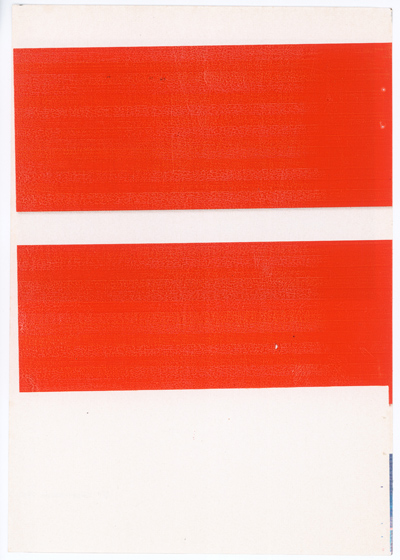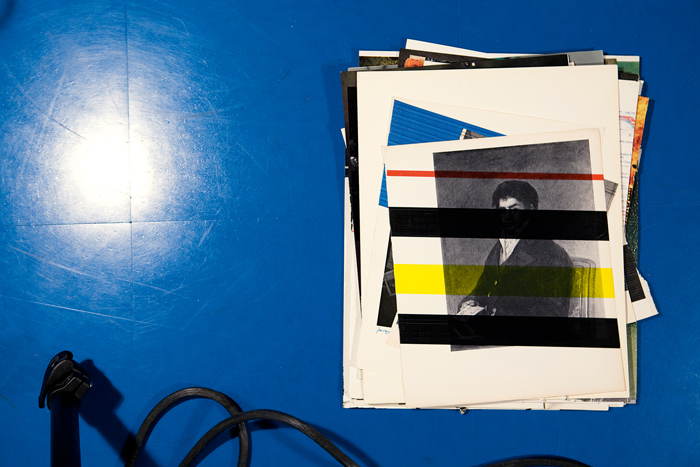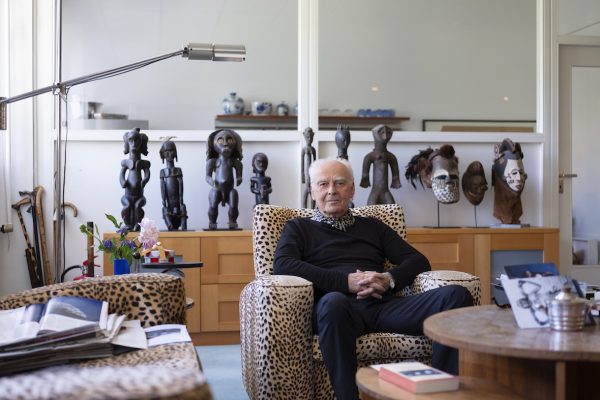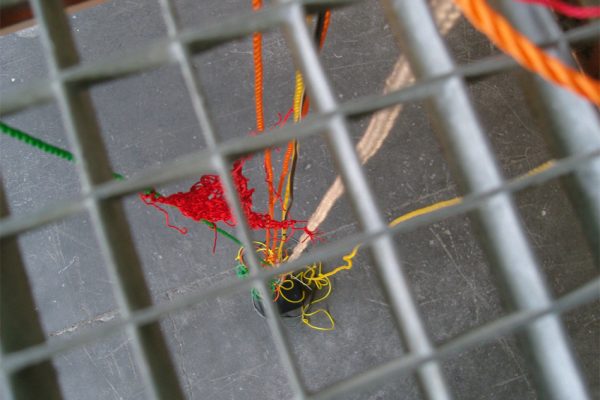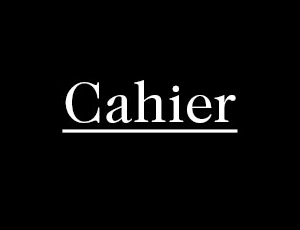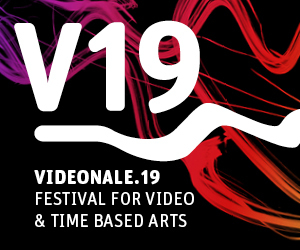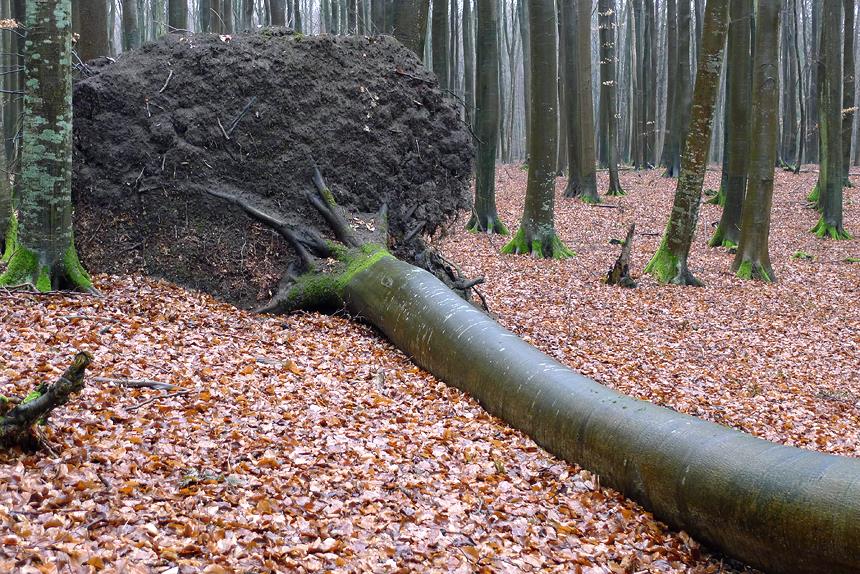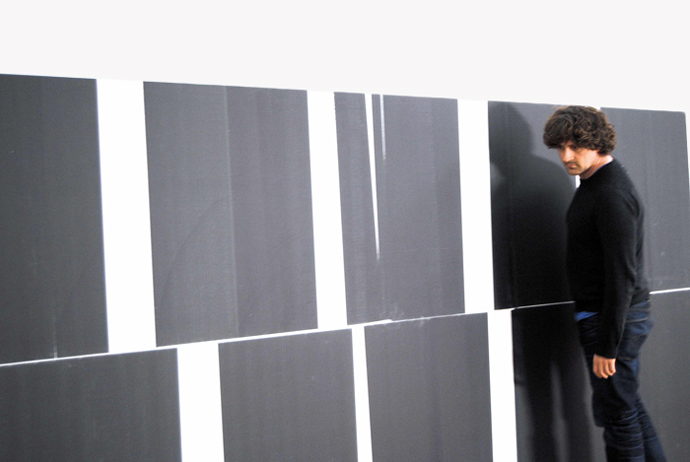
Wade Guyton about efficiency, inner logic and floors
Wade Guyton / Museum Ludwig Köln / 23. April – 22. August
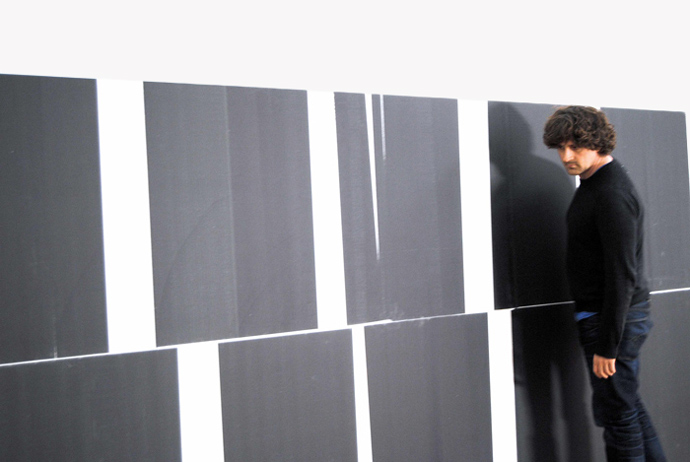
Wade Guyton, born 1972, is a painter and not a painter. For sure he is a conceptualist (ab-) using ink-jet printers for (print) drawings on magazine and book pages as well as (print-) painting on lead-primed linen. His working process is ambivalent: Controlled print production from computer files collides with mechanical distress resulting from a use of material, which printers are not made for. In a subtle ironic way Guyton, who also works sculptural, reflects on visual systems, the design-inflation of minimal and hard edge forms and the painting-discourse itself. For the skylight room at Museum Ludwig he has developed his largest canvases so far: A monochrome, nearly eight meters high.
Christoph Platz (CP): You have been to Cologne before for a solo show at Gisela Capitain Gallery in 2007. How does it feel to be back again?
Wade Guyton (WG): I like Cologne a lot and I come for visits often because of the gallery and I‘ve also worked on books with Walther Koenig. I was also here for a show together with Seth Price. But this is now the longest stay, I am here for two weeks.
CP: How important is the specific location you work at? Is it important for you to get inspired by the rooms where you will show your work?
WG: I think it is always part of my work and to some extent I‘ve always taken the architecture of the space into account. At Portikus I obviously did that much more, because I built a floor, which covered the whole place. For the show at Capitain the paintings, drawings and sculptures in each room had a different logic in relation to the space and the windows. And here at Ludwig museum, the exaggerated features of the room were impossible to ignore – the staircase and the high walls. More so now I think, when I visited the space before the staircase went in and that one wall wasn‘t as prominent. Now, the single wall becomes even more the focal point. And it becomes less of a sculpture room in a way and more of a painting room. As I was walking down the stairs I kept thinking that the room felt like a movie theater with all your attention on this wall, so it seemed like a big challenge. Eventually I came to the decision, that I needed to do what I would normally do but change the dimensions and make these incredibly tall paintings to fit the room. So maintaining the limitations of my work- which are normally determined by the printer and the software and the linen- and add in the new extended limit of the room. The height. So all of these eight panels are an entire roll of linen. 8 m.
CP: So, with the staircase it becomes actually a theatre…
WG: Yes, indeed, very cinematic. I decided to take just that wall and would also use the upstairs for a group of drawings and the artist book, which I made for the show.
CP: Talking about books, the special thing about your work is, the fact, that you‘re using a printer for your works. Is there a favorite type of printer, or do you have different ones for different works?
WG: [Laughs] Right now a few of each kind. The way I make drawings is just with a desktop Epson C88 printer and they are designed to break, they are really cheap. So I bought a lot of them before it became impossible to find them, I have a stockpile of those. The printer I use for the paintings is an Epson 9600 UltraChrome and I bought it in 2004 with my friend Kelley Walker. We borrowed money from friends to afford it.
CP: Are you and Kelley Walker still working together?
WG: Yes, we still do. We’ve known each other for many years, and we started working together around 2004. We enjoyed it and decided to continue the collaboration and make sure it operated and had a life like an artist on his own, separate from either of us. So we’ve had a lot of exhibitions together in that way. I think maybe the best work we did together has been recently. It took a while, it had its ups and downs and its own strange progression – just as an artist working alone would have, as well.
CP: But you don‘t consider yourself as a »dynamic duo«?
WG: No, well, it‘s called Guyton\Walker, I mean it‘s not that creative of a name. But it is not a different made up identity, like our friends Reena Spaulings or Claire Fontaine. It is a bit of a different kind of collaboration, we never give up our own identity, so you always have to think of my work or Kelley‘s work or both our work separately and the connection to the collaboration. We wanted it for a long time to have it‘s own identity and to develop it‘s own vocabulary and strategies. And now it has taken it‘s own life, it feels very separate from my own work, but it feels like my own as well.
CP: Regarding the printers again, I am very interested in the question of efficiency. Has that been a relevant starting point for you in using a printer?
WG: Yeah. In the beginning I never had a strong interest, like lots of people have, to draw, doing things with their hands. I was never a doodler. I had never felt a drive to draw.
CP: And in school, didn‘t you have to draw?
WG: [Laughs] Actually when I was a kid, I really hated art classes. My father was a kind of a Sunday painter and he liked to draw and do water colors. So, I would bring him my assignment and he would do them for me, because it was easy for him to do, these stupid drawings of fairy tales and so on. And one time, actually he won a contest [laughs].
CP: So, that is definitely a strategy of efficiency…
WG: Yeah. My father is not around any more, so I cannot ask him to do my drawings for me. So, I had to find a different way. And I came up with the solution to use the printers then; I wasn‘t doing anything complicated. The nature of the printer is efficiency in itself and about working, being productive. It was interesting to me to intersect with that mode of production, to have something supposedly creative interact with an office machine.
CP: So is your work in a way man versus machine?
WG: I don‘t think it is so oppositional. I think it is just another tool. And we are all frustrated with computers, all the time. So, maybe it is always man versus machine. But you also always develop a relationship with computers these days- something my parents never had. And now, the generation younger than me, has an incredibly different relationship to computers than we have. To me it seems there‘s always a kind of negotiation, sometimes you are in tune with it and other times you are fighting with it.
CP: So you are interested in the fact that you have a machine, which is made to reproduce and to work in a repetitive way, but at the same time, in your working process, you over-use it‘s possibilities, right?
WG: I could also be under-using the machine. That is what maybe most people would think. Like my repair guy, or other people who come to the studio who don’t see what I make as art- my landlord, the delivery guys…
The guy who fixes my printer, he doesn‘t understand why I use a printer for doing these things, it doesn‘t make any sense to him, because the printer is designed to print photographs, it is designed to make perfect copies. And I don‘t do that. So, I‘m really under-using the printer in a way, but over-taxing it by making it do something it was not meant to do.
CP: So, is it more a tool, or something you‘re reflecting technology with?
WG: It is probably just a tool. I don‘t think I would be comfortable extrapolating some larger idea about contemporary life and technology just based on my use of this printer.
CP: Looking at your black paintings, one could think of the first generation of the School of New York like Rothko, Reinhardt or Newman or, referring to your stripes, Pierre Soulage‘s works since 1979 or the tower paintings from Alan Charton. For some of these monochrome painters black was a mirror, for some a magic hood, for some it was pure emptiness and pure denial. Are there connotations you have in mind thinking about black?
WG: No. If you live in New York, everyone wears black. My drawings started with black. Black is some kind of a default position. If you open up a Microsoft Word file and start typing, the text always comes out black. It‘s just automatically that color, so it is the first option, and I went with it.
CP: In your drawings, you use found book and magazine pages and print on them with a lot of color. How does it work, do you draw something in a digital file and then choose the appropriate fragment to print on or is it the other way around, do you first have a book page for example and then draw something for printing it on it?
WG: Sometimes in both ways, and sometimes in another way. In my early drawings I would find these book pages and would try to figure out how I would do an intervention. A lot of these were architecture books from Germany and Austria, and I was doing these simple black lines, which somehow replicating the pattern that were in these buildings. And then there was a relationship between two graphics and I started using the same drawing files and put them over various different pages. Sometimes I don‘t even pay attention to what the pages are. Maybe make a plan for a page and a file, that might look good together, and then I just put other things behind it and put the whole stack of paper in the printer. So the first drawing that comes out seems to be what I want because its composed, and then the following several pages are more unpredictable and sometimes more satisfying. There’s always some kind of disappointment in getting what you want.
CP: Did you ever think of printing over found banners, analogue to the drawings?
WG: No, but I‘ve done some posters. I made a few, which I call drawings, and worked with other people‘s, like a Chris Williams – Poster or a Marcel Broodthaers – Poster. I collect them and sometimes it seems good to print over them.
CP: Let‘s talk about your Xs. Do you still use them or do you consider them as a period before your bigger sized monochromes?
WG: I still use them. I forgot about them for a while, made the monochromes, because the monochromes came up by covering up the Xs. It seemed interesting, bringing them back, but differently. Some of them in color, that is obviously a difference, but there was also a different nature to the handling of the material. In making the monochromes I became less cautious with the linen. I did some fire paintings after the monochromes and they are very different from the fire paintings I made before the monochromes.
CP: You said, you have chosen the letter U, which is very interesting especially in your sculptures, to get rid of the X. Why?
WG: Yeah, I wanted to get rid of the X, because people were talking about it in a simple way, it was all about cancellation. And I thought this could be part of it but it is certainly not the whole thing. So some other mark had to come in to interrupt that kind of interpretation.
CP: The X is a strong iconographic sign…
WG: Of course.
CP: For me it is obvious, that it not that just about the denial, blocking the frame-thing, but X also as a sign of pointing something, marking a focal point…
WG: Exactly, exactly.
CP: And I see your interest in balance, is that important for you?
WG: Well, the X definitely has this symmetrical structure… and it also registers the process in an interesting way, because you can see the sliding up and sliding down of the image and where the X falls apart. Or when the X loses a limb, that feels very anthropomorphic, one of the legs get cut off.
//Audio: Wade Guyton talks about X
CP: For your works in Cologne, do you use the same production technique as for the Xs which is to fold the linen and to print both sides with the same file?
WG: Yes, exactly the same. But the file is just 3 black bars.
CP: So, again very efficient, a very practical way of producing a work…
WG: Right.
CP: In different exhibitions, you used a new floor in the rooms referring to your studio floor. You photographed your drawings for the lecture here in cologne with the blue kitchen floor, in Portikus you used an black one in the exhibition. Did you think about that for cologne?
WG: I thought about that and I decided no. My assumption was, the very few people who are interested in my work would have probably seen it in Frankfurt. And I didn‘t want to repeat myself and wanted to do a step in a different direction. I tried to figure out how to deal with that room in a different way.
CP: How did the idea came up with the floor?
WG: I was the first time showing these black monochromes in New York, in Chelsea, at Friedrich Petzel gallery. I realized that I wasn‘t so comfortable just showing a group of monochromes and felt like there needed to be some other way or something intervening to change the way you would look at them. So I just thought about how they were made by me and they always lay on the floor in the studio. So, the floor should come into the gallery then it brings the theatricality of the studio into the gallery. And it‘s the only surface that‘s painted. So you were feeling the painting through your feet while you would be looking at these printed objects.
//Audio: Wade Guyton talks about floor
CP: You did a sculpture, which was done out of a framework or skeleton of a Breuer chair (untitled action sculpture [chair] 2002, steel, variable). You found a very nice term in a lecture – you called the process »to free the chair from its condemnation to furniture«. In your drawings you used a lot of pages with design objects. Do you have a general interest in Design?
WG: Definitely. I realized that when I was started not just to look at the photographs of the book pages I used I was actually looking at the whole page. The text, the page numbers were important. There was a specific context for these photographs, and not only the content in the photographs. I don‘t know a lot of design history, as much as anyone else.
And the chair was just a chair I liked. The first one was one I picked up off the street and brought it to my studio. It was broken, already. And I intended to fix it, so I can use it, and I never got around to fixing it. And I kept looking at it every day, thinking »I should fix that, I should fix that«. Then I kept looking at the structure and I realized, the metal was made from bending, and so I wondered what would happen, if I continued bending.
//Audio: Wade Guyton talks about chair
CP: That reminds me of something you said in your lecture, which was, you take advantage of the moment, playing with the edge of something failing or breaking. So, your way of working with that Breuer sculpture is similar to the printing process, right?
WG: Yes.
CP: One last thing I wanted to know: In that lecture you also mentioned, that painting or the print-painting-process is an unending solving of problems, a process of averting a mess. That means you use failure in a productive way. How do you deal with advance of technology and how do you find the right portion of potentially errors? Did you really choose a special printer for anything?
WG: No, I had no idea what to do with the printer. I bought the printer with Kelley because we wanted to make images – photographic images. And it was so expensive to pay someone else to print out these works for us on canvas. So then I realized that I could use the printer in another way, for myself.
CP: I read, you started a publishing company, how did that plan come up?
WG: Yes, The Leopard Press. I had conversations with two friends of mine, Bettina Funcke and Johanna Burton and it seemed like a fun thing for me to do. I collect tons of books and buy lots of books. It seemed logical to put some energy and money into making some books other than my own. The first book was quite easy for us, because Seth [Price] had written it, so the manuscript was done and we just published it. And then we‘ve done our second edition of it. So far it is basically a publishing company with just one book with two editions [laughs].
Christoph Platz (*1982) is curatorial fellowship holder at Ringenberg castle.


